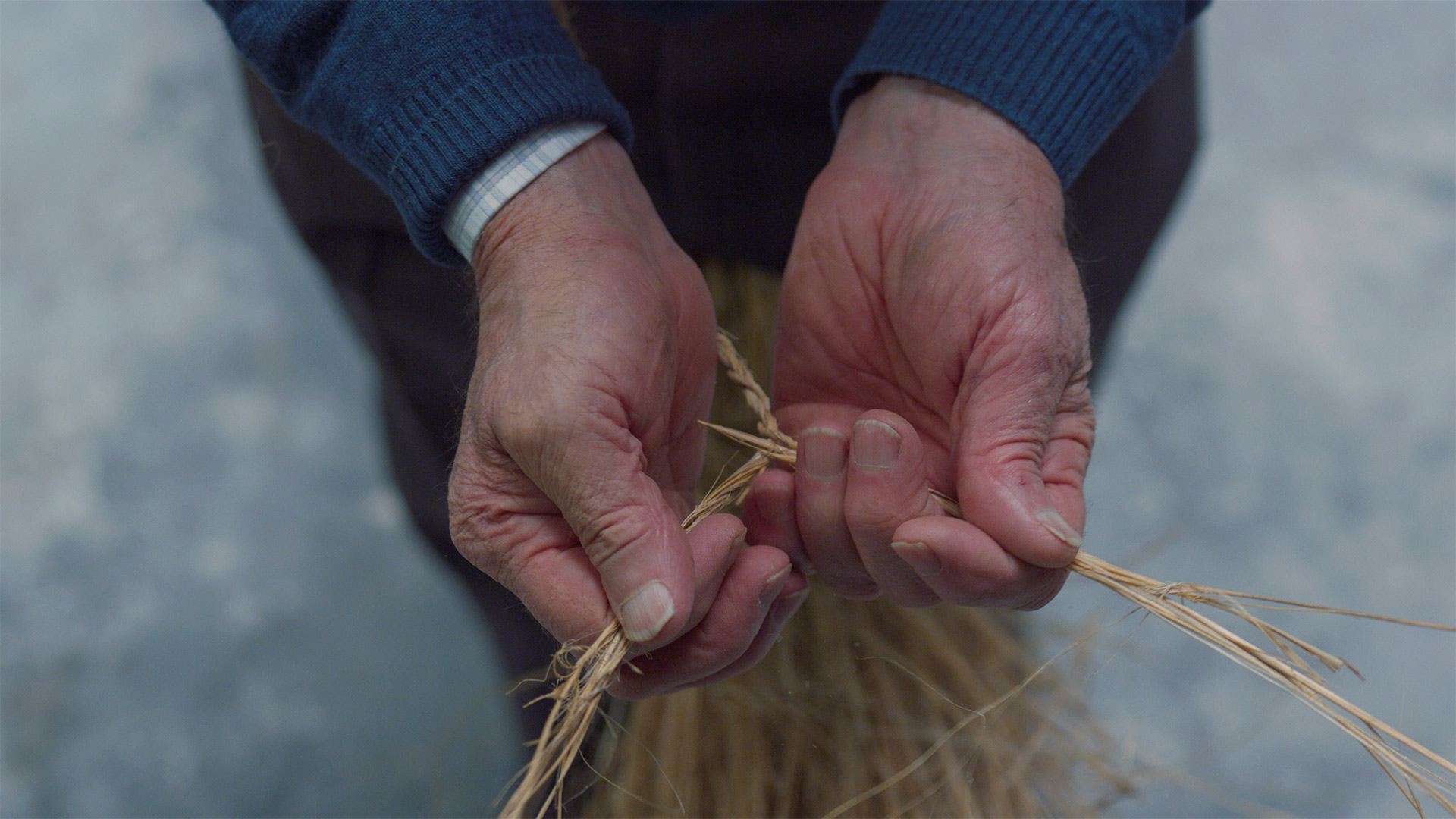Navarra inmaterial – Nafarroa inmateriala
Credits ↴
Book ↴
® All rights reserved 2024
Espartería
Espartzugintza
Esparto Work
CAST
|
EUS
|
ENG
Técnica
Oficio
Teknika
Oficio
Technique
Craft
Sesma
Tomás Goicoa Martínez
Mari José Recalde Iglesias
Tomás Goicoa Martínez
Mari José Recalde Iglesias
Sesma
Tomás Goicoa Martínez
Mari José Recalde Iglesias
Tomás Goicoa Martínez
Mari José Recalde Iglesias
Sesma
Tomás Goicoa Martínez
Mari José Recalde Iglesias
Tomás Goicoa Martínez
Mari José Recalde Iglesias
“El esparto hay que arrancarlo, que se cure y majarlo con un mazo de madera. En Sesma no había. Había un sindicato de esparteros que traían los gabijones - veinte kilos, veinte pesetas- de Bardenas. Las mujeres lo hilaban y los hombres lo cosían. Con el esparto, mal o bien, comíamos”.
Último espartero de Navarra. Para los seis años, en 1941, ya sabía hilar los cordeles. Ahora ya un pasatiempo que le ha llevado a generar esculturas y elementos para demostraciones y exposiciones de Mari José Recalde Iglesias y casi todas pensando en su nieta.
El esparto, fibras obtenidas de diversas plantas silvestres del grupo de las gramíneas, así como las plantas mismas, ha sido utilizado desde al menos el Neolítico.
Se arranca del campo en verano, se deja secar y se maja con un martillo de madera sobre una piedra. Entre 1940 y 1960 el Sindicato de Esparteros tenía más de trescientos socios. Hoy en día sólo se trabaja el esparto en demostraciones. Lo dejó porque requería mucho trabajo y no era rentable, mucha de la actividad se traspasó al cultivo del espárrago.
“Espartzua sustraitik atera behar da, ondu egin behar da eta zurmailu batekin xehatu. Sesman ez zegoen. Sindikatu bat zegoen, eta espartzugileak ekartzen zituzten –20 kilo, 20 pezeta– Bardeetatik. Emakumeek iruten zuten eta gizonek josi. Espartzuarekin, ongi ala gaizki, jaten genuen”.
Nafarroako azken espartzugilea. Sei urte zituenean, 1941ean, jada kordelak iruten bazekien. Orain denbora-pasa du, eta erakustaldi eta erakusketetarako eskulturak zein elementuak sortzen ditu. Ia guztiak bere iloba gogoan.
Espartzua, lastodunen familiako landareetatik ateratako zuntzak, eta landareak beraiek Neolitikotik gutxienez erabili dira.
Udan ateratzen da zelaitik, lehortzen utzi eta zurmailu batekin xehatzen da harri baten gainean. 1940 eta 1960 artean Espartzugileen Sindikatuak 300 kide baino gehiago zituen. Gaur egun, erakustaldietan baino ez da lantzen espartzua. Jendeak lan mordoa eskatzen eta errentagarria ez zelako utzi zuen. Jarduera hori hein handi bat zainzuriek ordezkatu zuten.
“Esparto has to be torn, cured, and mashed with a mallet. There was none in Sesma. There was an esparteros union that would bring the bundles – twenty kilos, twenty pesetas – from the Bardenas. Women weaved and men sewed. Thanks to esparto, we could bring food to the table.”
Last espartero of Navarre. By the time he was six years old in 1941, he knew how to weave the strings. This is now a hobby that has led him to create sculptures and objects for showings and exhibitions, almost all of them with his granddaughter in mind.
Esparto, a fibre obtained from several wild grasses, and the plants themselves, has been used at least since the Neolithic.
The leaves are harvested in the summer. They are left to dry and are mashed with a mallet on a rock. Between 1940 and 1960 the esparteros union had more than three hundred members. Today, esparto is only used at exhibitions. People abandoned it because it required a lot of work and it was not profitable. Much of the activity switched to asparagus farming.
Ver detalles:

1

